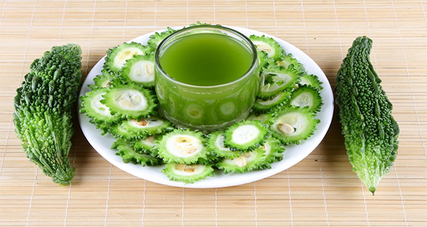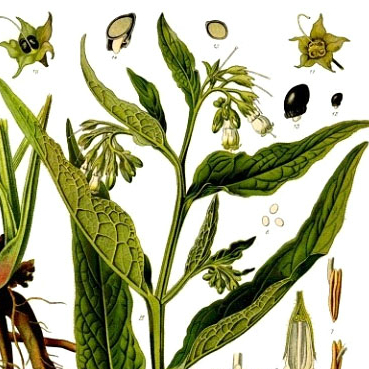
tel: 512 280-1192 thursday, july 16, 2015
Nursery Notes: our summer sales continue! $1 off all native per-
ennials, and roses on sale for $10. We are fully stocked with Fall
tomatoes, and our greenhouses also have a wide array of peppers
Please come by for a visit! / There will not be a newsletter next
week. (The editor is on vacation.)

The Magic Properties of Bitter Melon: this bumpy-looking cu-
cumber is being hailed in some circles for its amazing healing
properties. Diabetes, eye problems, indigestion and low levels of
immunity are all helped by bitter melon, they claim. But most
important is its use to fight pancreatic cancer, as tested by the
University of Colorado. Make Your Life Healthier
______________________________________________________
Four Small Garden Designs: 'Whether dealing with a long narrow
space behind a vintage home, a cramped backyard that lacks privacy,
or a shabby garden at the rear of a brownstone the possibilities are
endless,' write the editorial team at Garden Design. With the right
design, they say, one can turn any space into 'an incredible garden.'
______________________________________________________
Central Texas Gardener: Tips from Skip Richter, who is celebrating
the release of his new book, Texas Month-by-Month Gardening. On
tour, the butterfly garden retreat at the Bulverde/Spring Branch library.
Sat., 4 p.m. and Sun. at 9 a.m. KLRU

We have comfrey in stock: $4.99 for a 4" round pot.
A Celebration of Comfrey
by Chris Winslow
One interesting herb that we hear so little about is comfrey (Symphy-
tum officinale). This easy-to-grow perennial comes from the borage
family, has broad leaves, and it blossoms with small bell-shaped,
light-colored flowers.
It has lots of uses for the organic gardener, and also for those of us
interested in botanical medicine. Organic gardeners like comfrey be-
cause its leaves are rich in plant nutrients. As it grows and matures,
comfrey mines a host of these nutrients from the soil.
You can use the herb’s leaves as a mulch, a side-dressing, make it
into comfrey tea, or create a compost. Each method will provide
organ-ically-derived nutrients to your vegetables, flowers and land-
scape plants.
Comfrey is especially rich in potassium, an essential plant nutrient
needed for flower, fruit, and seed production. Gardeners can also use
comfrey leaves in small amounts to activate compost. Its nutrients
give a big boost to the process, helping to breakdown organic matter
into rich soil amendments.
In the world of medicine, comfrey has been known as ‘knitbone,’
because of its ability to speed up the healing of bone fractures, bruis-
ing and cuts.
However use of the herb internally is a somewhat controversial sub-
ject. The FDA warns against it due to possible liver damage.
Growing this herb is fairly easy. All you need is a nicely shaded,
well-drained location with plenty of compost and a slow-release
organic fertilizer (blood and bone meal) to give it a start. Keep it on
the moist side.
Your stand of comfrey can easily be increased by root division. Seg-
ments of these black, turnip-like roots can be cut and placed into the
soil to create new plants.
Using comfrey in this way as an organic source of plant food, along
with composting, brings the gardener yet another step closer to inde-
pendence and self-sustenance. Happy gardening everyone!


Please contact newsletter editor Darrel Mayers (pictured above) with
any ideas for articles or interesting links. internationalrain@yahoo.com
(hitting 'reply' to this email won't work)
________________________________________________________
Visit the website: Its About Thyme
Visit the nursery:11726 Manchaca Road, Austin, 78748
Like us on facebook